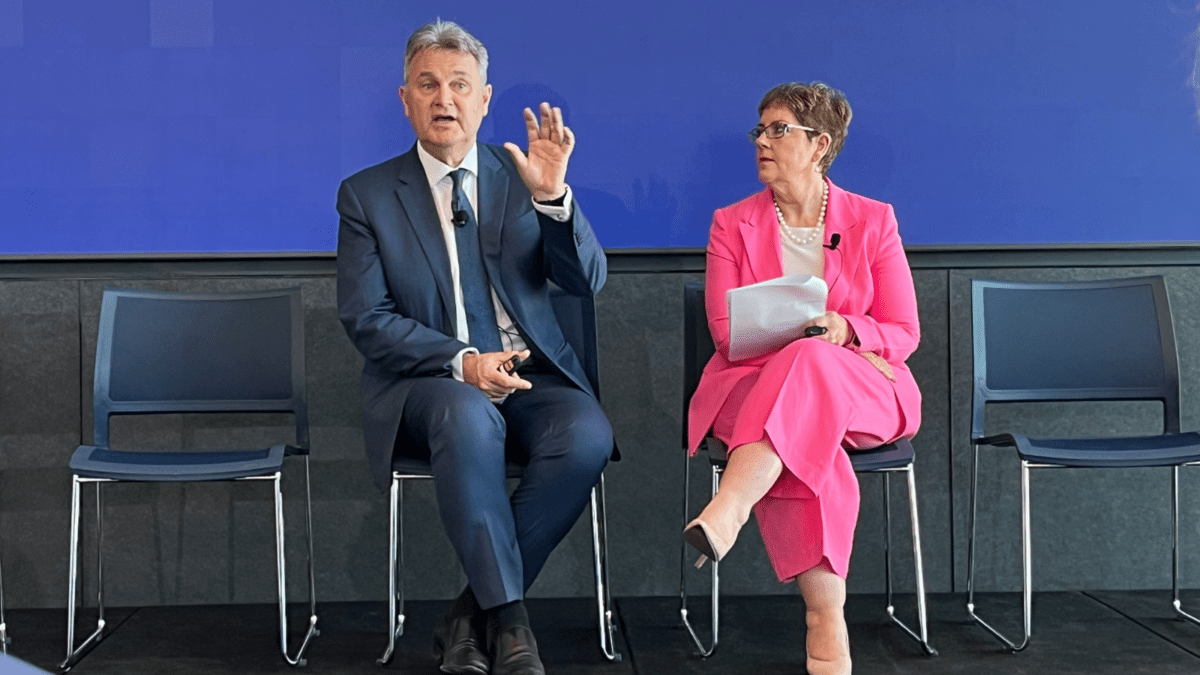Homeownership rates down from ‘peak house’ as Australians’ wealth priorities shift
Homeownership in Australia peaked in 1966, when 73 per cent of households owned their homes, according to a recent AMP report. That figure is 10 per cent lower today, reflecting a shift in how Australians define wealth, as well as cultural changes that have freed more people to participate in society.
The last 50 years of demographic and social change have fuelled the “rise of the individual”, with key cultural moments such as the recognition of indigenous Australians in the census in 1971 the introduction of no-fault divorce in 1975 marking “seismic shifts” that, among other things, changed how people view wealth, according to Bernard Salt (pictured, with AMP chief executive Alexis George), executive director of The Demographics Group and author of the AMP report.
“There is no one-size-fits-all community today as there was in 1966 when those who didn’t fit in were excluded,” Salt wrote in the report. “In this regard, the modern concept of wealthy for middle Australia (as well as for others) is more than homeownership. It may include home ownership, but home ownership no longer equates with the concept of wealthy.”
Titled What wealthy means to Australians in 2023: An exploration of cultural preferences and change, the report attributes the drop-off in homeownership rates since “peak house” in 1966 more to cultural changes than to financial reasons. The decline does not represent less wealth, but rather illustrates that the meaning of wealthy has changed for Australians and is less connected with the security of owning a home.
“The difference between our homeownership obsession of 1966 and the much diminished (but recovering) homeownership rates of today is having other options, other interest, more liquid forms of wealth preservation,” the report said.
Drawing from census data from the Australian Bureau of Statistics dating back to 1911, the report focussed on the median 80 per cent of the population to provide a picture of changes to the middle class. From the 1966 peak, ownership rates among this cohort began trending downward by 1986; as of 2021, the figure had fallen to 63 per cent.

This reflects major demographic shifts in that time, sparked by increasing immigration and workforce participation rates and by young people marrying and having children later in life.
Also key is Australians’ increasing life expectancy. In the late 1950s, life expectancy was around 69 years for Australian males, which meant barely five years in retirement. Today, life expectancy has extended to 84 years.
“Decades have been added to the lifecycle beyond the working age, and it requires Australians, and Australians as a community, to think about and to provision for how we deliver security and quality of life to people later in life,” Salt said.
“Those 15 years have been added to the time in life when you’re traditionally not in the working stage of the lifecycle. The idea of saving for retirement, of superannuation, of provisioning for that period in life, which can last two decades or more for modern Australians, is really important.”

While owning a home is still important, the drop since peak homeownership can be seen as a “trade-off”, Salt said: most Australians would accept a slightly lower rate of homeownership “to have women access the workforce, to be more inclusive, to have the right to dissolve an unhappy relationship”.
The fact that the retirement stage of the lifecycle can now extend 35 years or more has prompted Australians to rethink how they prioritise their sources of wealth. According to Salt, another marker of a “seismic shift” in society was the 1992 introduction of the Superannuation Guarantee, which saw Australians begin directing their wealth into shoring up a comfortable retirement.
“There’s less singularity to the concept of wealth” today than in the past, Salt said. “It’s more than just a house – it’s superannuation, it’s a whole range of things.”
He noted that prior generations of Australians who equated wealth with owning a home survived the Great Depression and World War II, so homeownership was very important from a security perspective. But the social structure that existed in the past and supported that dynamic “would not be accepted by Australians today,” he added.
“Australians today are more likely to equate the idea of wealthy with having the freedom to respond to a range of different situations, like losing a job, the impact of COVID-19, a marriage breakdown or the death of a partner, for example. Being able to respond to that now weighs on Australians’ minds.”









